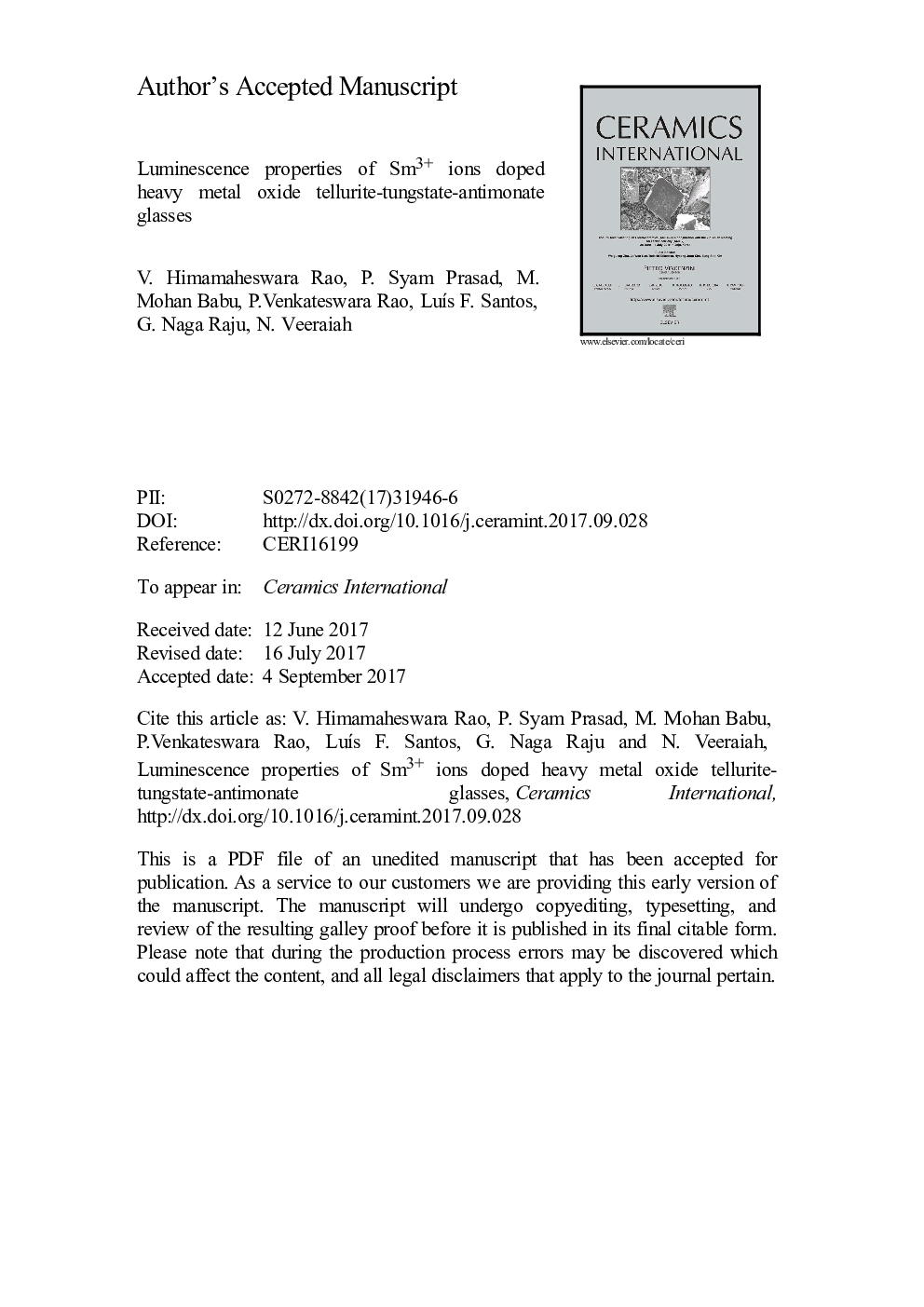| Article ID | Journal | Published Year | Pages | File Type |
|---|---|---|---|---|
| 5437286 | Ceramics International | 2017 | 25 Pages |
Abstract
The trivalent Sm3+ ion doped tellurium-antimony-tungsten oxides based glasses were prepared by conventional melt quenching and pressing method. Spectroscopic characterizations such as optical absorption, photoluminescence and decay profile measurements were performed on the glasses. Judd-Ofelt theory is used to evaluate the oscillator strengths and the three phenomenological intensity parameters (Ωλ, λ = 2, 4, 6) of the glasses. The photoluminescence spectra recorded under 479 nm excitation exhibited the emission bands at 562, 598, 645 and 708 nm corresponding to the transitions 4G5/2 â 6HJ (J = 5/2, 7/2, 9/2, 11/2) respectively. Using J-O parameters (Ωλ) various important radiative parameters viz., transition probabilities, emission cross-sections, branching ratios of various emission bands were evaluated. Decay profiles were recorded to find the lifetime of the 4G5/2 excited level and the obtained life time values are observed to decrease with an increase of Sm3+ ion concentration; such decrease is attributed due to clustering of Sm3+ ions which may cause luminescence quenching.
Related Topics
Physical Sciences and Engineering
Materials Science
Ceramics and Composites
Authors
V. Himamaheswara Rao, P. Syam Prasad, M. Mohan Babu, P. Venkateswara Rao, LuÃs F. Santos, G. Naga Raju, N. Veeraiah,
